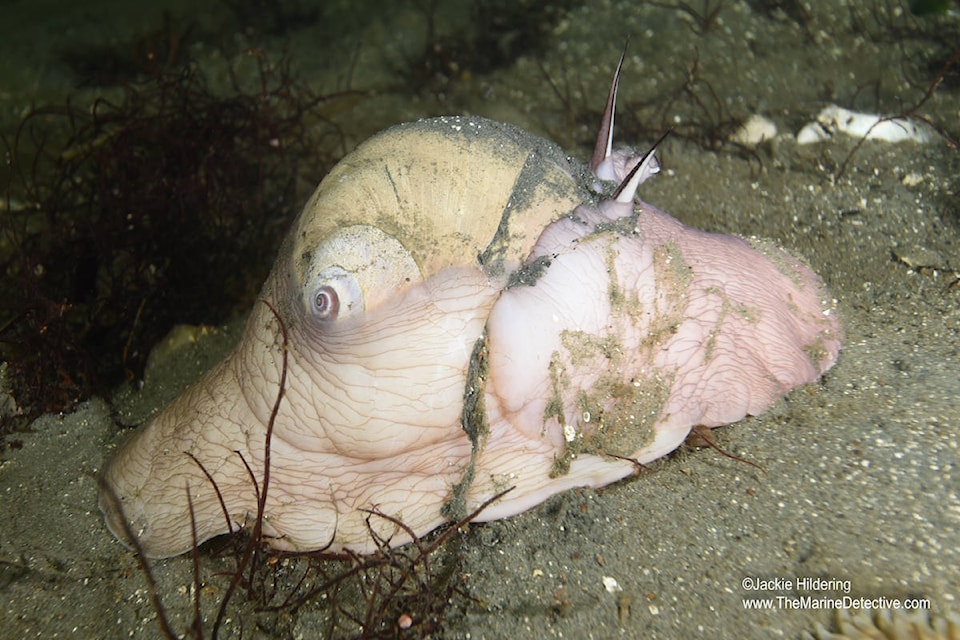Ever walked on a beach during low tide and noticed collar-shaped capsules?
And then wondered if it was probably trash?
Except it’s not. These collar-shaped cases are moonsnail collars consisting of thousands of eggs waiting to be hatched. And biologists are worried that people are unknowingly “cleaning” up moonsnail collars from the beaches.
RELATED: B.C.’s $50 million geoduck industry hit after China’s market slumps
Shaped like a detachable shirt collars, these glossy, sometimes rubbery looking bands often seem like industrial garbage to the untrained eye. Except, these are egg cases that female moonsnails build to lay eggs. They often surface on shores during low tides.
Jackie Hildering, a biologist and educator with the Marine Education and Research Society was most happy to see a lot of people suddenly wanting to know more about these sea mollusks.
Hildering took to her educational website, ‘The Marine Detective’ to explain the fascinating science behind moonsnail collars, after a resident posted pictures on social media wanting to know what they were.
Moonsnail collars contain thousands of microscopic eggs and sand held together with the moonsnail’s mucus. According to Hildering, the process is an “outstanding feat of engineering.”
When moonsnails are ready to lay eggs they collect grains of sand with their feet and, using mucus, cement the sand grains and eggs together to form this collar. The snail is often at the centre of this structure. After laying eggs and sealing them with yet another layer of sand and mucus, the snail crawls away from underneath the structure. When the eggs hatch, the collar breaks and the larvae swim out.
An intact collar indicates that it contains moonsnail eggs and should not be disturbed. Hildering advocates for a ‘no-take, no-touch’ policy and advises people against moving the collars.
Neither the moonsnails nor the collars are a recent phenomena, they appear every year on sandy beaches throughout the Island and are often visible during low tides.
“Moonsnails have been on earth probably even before humans,” said Hildering.
The fact that many people have only begun noticing them highlighted the disconnect that humans have had with nature.
“After the pandemic, people have become more tuned with nature,” said Hildering and added that several other variables including low tides made it possible for people to rediscover these fascinating mollusks on the island.
RELATED: Jellyfish-like creatures cover Tofino, Ucluelet and Pacific Rim National Park beaches
Lewis’ moonsnails are the largest and most commonly found species on B.C. coasts.
Hidlering also stressed on the need for people on Vancouver Island’s coast to know more about ocean creatures found closer home. She maintained that information and education are key to protecting more species.
Beach ethics and more on moonsnails can be found on The Marine Detective
For more news from the Island and beyond delivered directly to your email inbox, click here.
RELATED: Big Friday the 13th moon brings midnight walkers out to Campbell River reef
